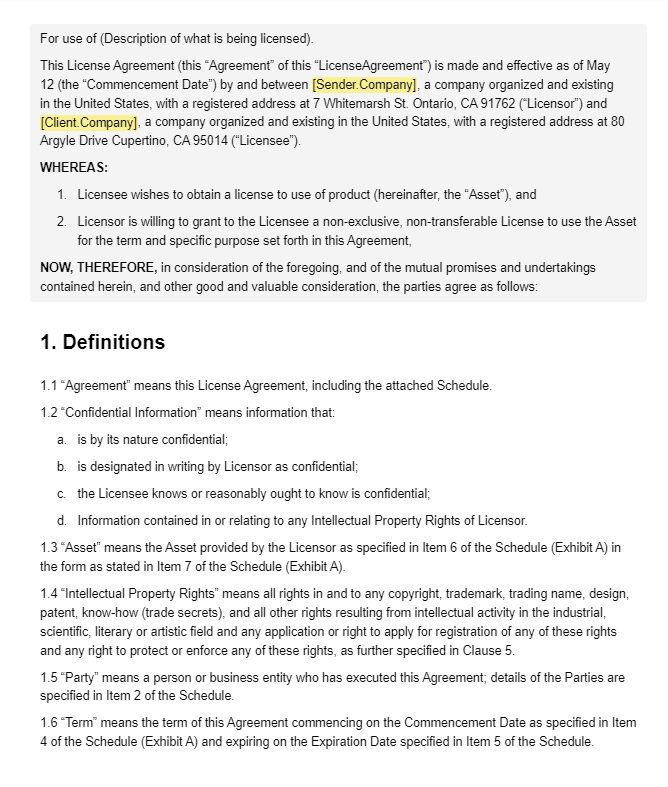License Agreement Template
Save time, avoid headaches, and ensure compliance effortlessly with current version of License Agreement Template. With our streamlined process, you'll have your form in hand within moments, giving you the peace of mind to focus on what truly matters – your business.

Understanding the Template
Stay Organized, Stay Secure: Secure Your License Agreement Template Today
Are you tired of navigating through licensing arrangements without clear agreements in place? It's a challenging and risky process, isn't it? Spending valuable time negotiating terms, addressing usage rights, or worse, encountering disputes that threaten your intellectual property. But what if there was a better way? Imagine having a downloadable License Agreement Template at your disposal, ready to customize with just a click. The License Agreement Template serves as a formal document outlining the terms and conditions of the license granted between the licensor (owner) and the licensee (user). Whether it's licensing software, trademarks, patents, or other intellectual property, utilizing this template ensures clarity and protection for both parties involved. After downloading the template, make sure to customize it according to the specifics of your licensing agreement.How to Use the Template
License Agreement Template Instructions
In the designated sections of the template, both the licensor and the licensee are required to input specific details, including: Parties Involved: Clearly identify the parties involved in the agreement, including their full legal names, addresses, and contact information. Specify the licensor (owner of the intellectual property) and the licensee (individual or entity obtaining the license). Licensed Property: Describe the intellectual property or assets being licensed, including details such as trademarks, patents, copyrights, software, or other proprietary materials. Scope of License: Define the scope of the license, including permitted uses, restrictions, and any limitations on the licensee's rights. Specify whether the license is exclusive or non-exclusive. License Term: Define the duration of the license agreement, including the start date and end date. Specify whether the license is for a fixed term or ongoing, and any conditions for renewal or termination. License Fees and Royalties: Specify the license fees or royalties payable by the licensee to the licensor. Outline the payment schedule, frequency, and accepted forms of payment. Intellectual Property Rights: Clarify ownership rights of the licensed property and any related materials. Specify that the licensor retains all rights not expressly granted to the licensee under the license agreement. Termination and Dispute Resolution: Include provisions for termination of the license agreement, including conditions, notice periods, and procedures for resolving disputes. It's crucial to ensure that all terms outlined in the agreement are clear, fair, and legally enforceable. Any amendments or modifications should be documented through formal channels and agreed upon by both parties.Frequently Asked Questions
A License Agreement Template is a standardized document used to formalize the terms of a license granted between a licensor (owner) and a licensee (user) for the use of intellectual property. It outlines the rights, obligations, and restrictions associated with the license, providing clarity and legal protection for both parties.
Both owners of intellectual property licensing their assets and individuals or businesses seeking to use intellectual property should use a License Agreement Template to establish clear permissions and protect their interests. It provides a framework for a successful licensing arrangement and reduces the risk of misunderstandings or disputes.
You can download the License Agreement Template for free from reputable sources like our website BlueNotary or from legal and intellectual property resources.
Yes, a License Agreement Template can be tailored to suit various types of intellectual property, including software, music, art, and patents, ensuring specific rights and obligations are clearly defined.


